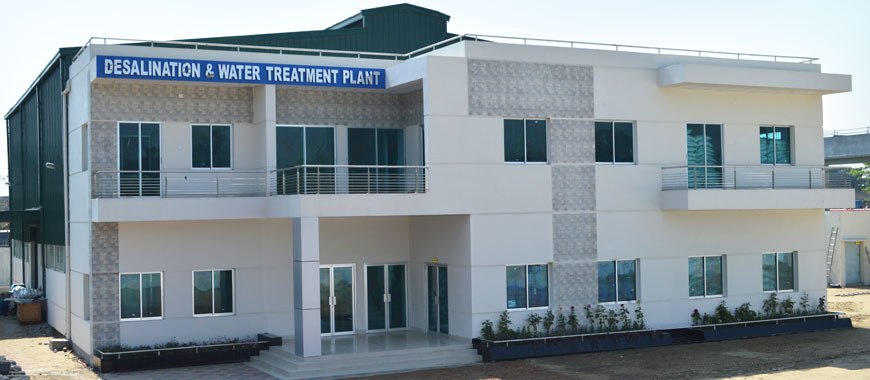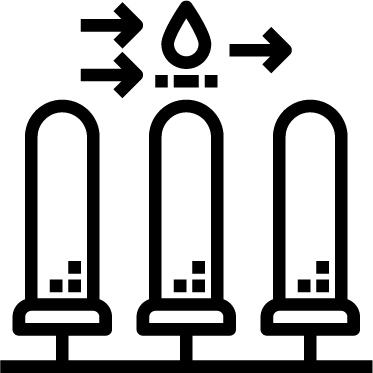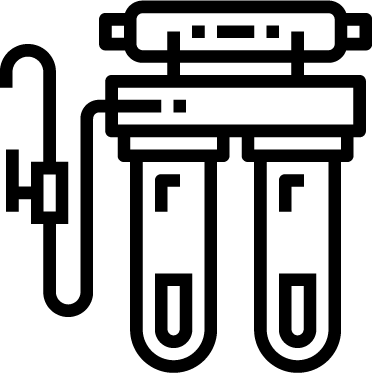
A seawater desalination plant is a type of plant that uses salt water to produce fresh water. It’s a very cost-effective way to produce drinking water, as it requires far less energy than traditional water sources like groundwater.
Seawater desalination plants work by extracting salt from the water and then recombining it with fresh water to create potable water. This process is usually done using reverse osmosis technology, which is a type of filtration that uses pressure and evaporation to filter out salts and other elements from the water.
The dried salt is then used in industries like agriculture or construction, or sold as chemicals or fertilizer. Seawater desalination plants are becoming increasingly popular because they’re environmentally friendly and help address global shortages of fresh water.
What are the benefits of a Seawater desalination plant?
A seawater desalination plant is a valuable resource for countries like Bangladesh that have a high demand for drinking water. It purifies salt water and makes it suitable for human consumption.
A seawater desalination plant is a great way to address the water concerns of a city or country. It’s a reliable and affordable way to provide access to clean water for both residential and commercial users.
Seawater desalination plants use a process known as reverse osmosis to remove salt from seawater. This process is incredibly efficient, and it produces fresh water that is safe to drink, suitable for agricultural use, and free from pollutants.
The main benefits of seawater desalination plants are-
- They’re environmentally friendly because they don’t require polluting chemicals or energy to run.
- It’s affordable because it requires relatively small amounts of energy to operate.
- It provides reliable access to clean water since the plant can produce up to 400,000 liters of fresh water per day.
How does a seawater desalination plant work?
The first step in the process is to collect incoming seawater from the ocean. This is done by placing a series of membranes over an opening in the seafloor that allows seawater to enter but not salt or other pollutants. The membranes are then saturated with a saline solution and forced against each other, filtering out all the salt and other solids from the water.
The filtered seawater is then pumped back up to the surface where it can be used for drinking or irrigation.
What are the types of seawater desalination plants?
There are two common types of seawater desalination plants: reverse osmosis and direct osmosis.
Reverse osmosis plants: Reverse osmosis plants use a semipermeable membrane to remove the salts and minerals from the water.
Direct osmosis plants: direct osmosis uses pressure and gravity to push the water through a thin membrane that blocks most particles but allows dissolved salts and other minerals to pass through.
Both reverse osmosis and direct osmosis plants have several advantages over traditional freshwater sources like groundwater: they’re more efficient in extracting resources, they don’t require large amounts of fresh water, they’re easier to operate, and they’re less expensive than traditional sources.
Why Choose Us
We are the leading seawater desalination plant operator in Bangladesh. We have been successfully operating our plant for more than a decade and have developed a strong reputation for delivering top-quality service at competitive prices.
Our plant is designed to handle large volumes of water, making it ideal for densely populated areas like Dhaka. We also have years of experience in designing and constructing seawater desalination plants, which means that we are able to provide you with expert advice and guidance throughout the entire project cycle.
We’re committed to providing quality products and services that will help you solve your water problems in the most efficient and environmentally friendly way possible. We also offer a wide range of customization options to perfectly meet your specific needs. Contact us today to learn more about our seawater desalination plant in Bangladesh!
Frequently Ask Question
Is desalination of seawater possible?
Yes, desalination of seawater is possible. It’s an energy-intensive process, but it can be done cheaply and with high-quality results when done correctly. Desalination requires a lot of salt to be removed from the water, so it may not be suitable for areas that are subject to coastal flooding or periodic drought. However, desalination could play a role in mitigating global water shortages in regions where freshwater resources are scarce.
Is seawater desalinated safe to drink?
There is some controversy surrounding whether or not seawater that has been desalinated is safe to drink. Some argue that the process of desalination can be harmful, while others claim that it is safe enough to consume. The truth likely falls somewhere in between these two positions and will depend on a number of factors, including the quality of the water being desalinated.
If you are concerned about safety, it may be best to avoid drinking any type of water that has not been confirmed as being safe by an independent testing organization. Alternatively, you could try to find out which brands have eliminated potential contaminants through their desalination process and choose those instead for your own consumption.
Which country uses the most desalinated water?
According to recent data, the country that uses the most desalinated water in Saudi Arabia. This trend is likely to continue as more and more people are looking for ways to reduce their reliance on groundwater resources. Desalination involves removing salt from seawater or other sources of fresh water, and it has become an important technology in efforts to address global water shortages.
How much does the seawater Desalination Plant Cost?
There is no single answer to this question, as the cost of seawater desalination plants varies depending on a number of factors, including the size and type of plant, location, and technology used.
Which is the best method for a Seawater desalination plant?
There are several different methods of the seawater desalination plant, but the most popular one right now is reverse osmosis. Reverse osmosis is a process in which water is forced through a semipermeable membrane to extract salt and other minerals from the water.
The two main advantages of reverse osmosis over other methods are that it’s relatively easy to operate and it’s efficient in removing salt from water. It also has the advantage of being able to produce high-quality water at a lower cost than other methods.
Though reverse osmosis is the most popular method of desalination plant right now, there are others that are being developed as well. These include distillation and ultrafiltration, both of which are currently being used in smaller-scale applications.
What are the materials needed for a Seawater desalination plant?
To build a seawater desalination plant, you will need the following materials: – Seawater intake pipe
- Salinity sensor
- Pressure sensor
- Pump station
- Desalination plant (or reverse osmosis unit)


 Industrial Water Plant
Industrial Water Plant









